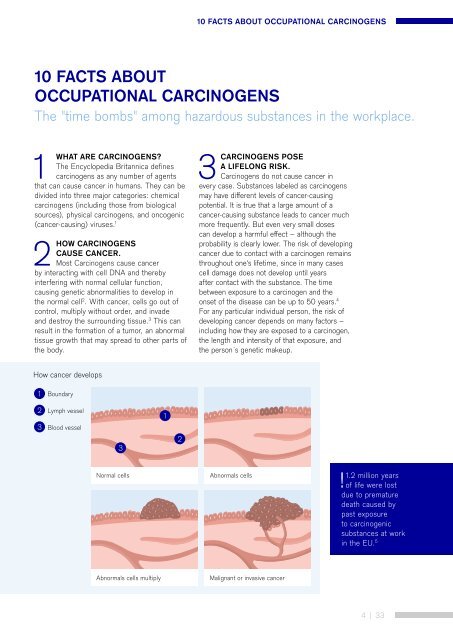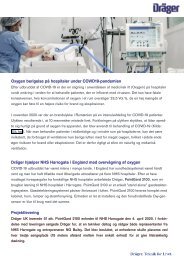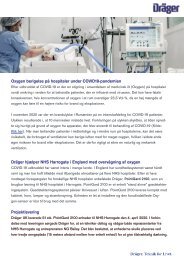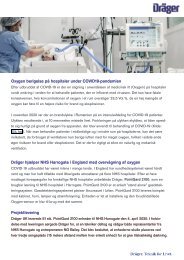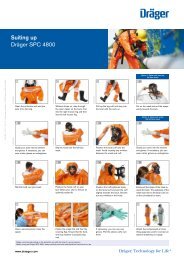Carcinogenic Substances at Work
You also want an ePaper? Increase the reach of your titles
YUMPU automatically turns print PDFs into web optimized ePapers that Google loves.
10 FACTS ABOUT OCCUPATIONAL CARCINOGENS<br />
10 FACTS ABOUT<br />
OCCUPATIONAL CARCINOGENS<br />
The "time bombs" among hazardous substances in the workplace.<br />
1<br />
WHAT ARE CARCINOGENS?<br />
The Encyclopedia Britannica defines<br />
carcinogens as any number of agents<br />
th<strong>at</strong> can cause cancer in humans. They can be<br />
divided into three major c<strong>at</strong>egories: chemical<br />
carcinogens (including those from biological<br />
sources), physical carcinogens, and oncogenic<br />
(cancer-causing) viruses. 1<br />
2<br />
HOW CARCINOGENS<br />
CAUSE CANCER.<br />
Most Carcinogens cause cancer<br />
by interacting with cell DNA and thereby<br />
interfering with normal cellular function,<br />
causing genetic abnormalities to develop in<br />
the normal cell 2 . With cancer, cells go out of<br />
control, multiply without order, and invade<br />
and destroy the surrounding tissue. 3 This can<br />
result in the form<strong>at</strong>ion of a tumor, an abnormal<br />
tissue growth th<strong>at</strong> may spread to other parts of<br />
the body.<br />
3<br />
CARCINOGENS POSE<br />
A LIFELONG RISK.<br />
Carcinogens do not cause cancer in<br />
every case. <strong>Substances</strong> labeled as carcinogens<br />
may have different levels of cancer-causing<br />
potential. It is true th<strong>at</strong> a large amount of a<br />
cancer-causing substance leads to cancer much<br />
more frequently. But even very small doses<br />
can develop a harmful effect – although the<br />
probability is clearly lower. The risk of developing<br />
cancer due to contact with a carcinogen remains<br />
throughout one‘s lifetime, since in many cases<br />
cell damage does not develop until years<br />
after contact with the substance. The time<br />
between exposure to a carcinogen and the<br />
onset of the disease can be up to 50 years. 4<br />
For any particular individual person, the risk of<br />
developing cancer depends on many factors –<br />
including how they are exposed to a carcinogen,<br />
the length and intensity of th<strong>at</strong> exposure, and<br />
the person´s genetic makeup.<br />
How cancer develops<br />
1<br />
Boundary<br />
2<br />
3<br />
Lymph vessel<br />
Blood vessel<br />
3<br />
1<br />
2<br />
Normal cells<br />
Abnormals cells<br />
1.2 million years<br />
! of life were lost<br />
due to prem<strong>at</strong>ure<br />
de<strong>at</strong>h caused by<br />
past exposure<br />
to carcinogenic<br />
substances <strong>at</strong> work<br />
in the EU. 5<br />
Abnormals cells multiply<br />
Malignant or invasive cancer<br />
4 | 33


